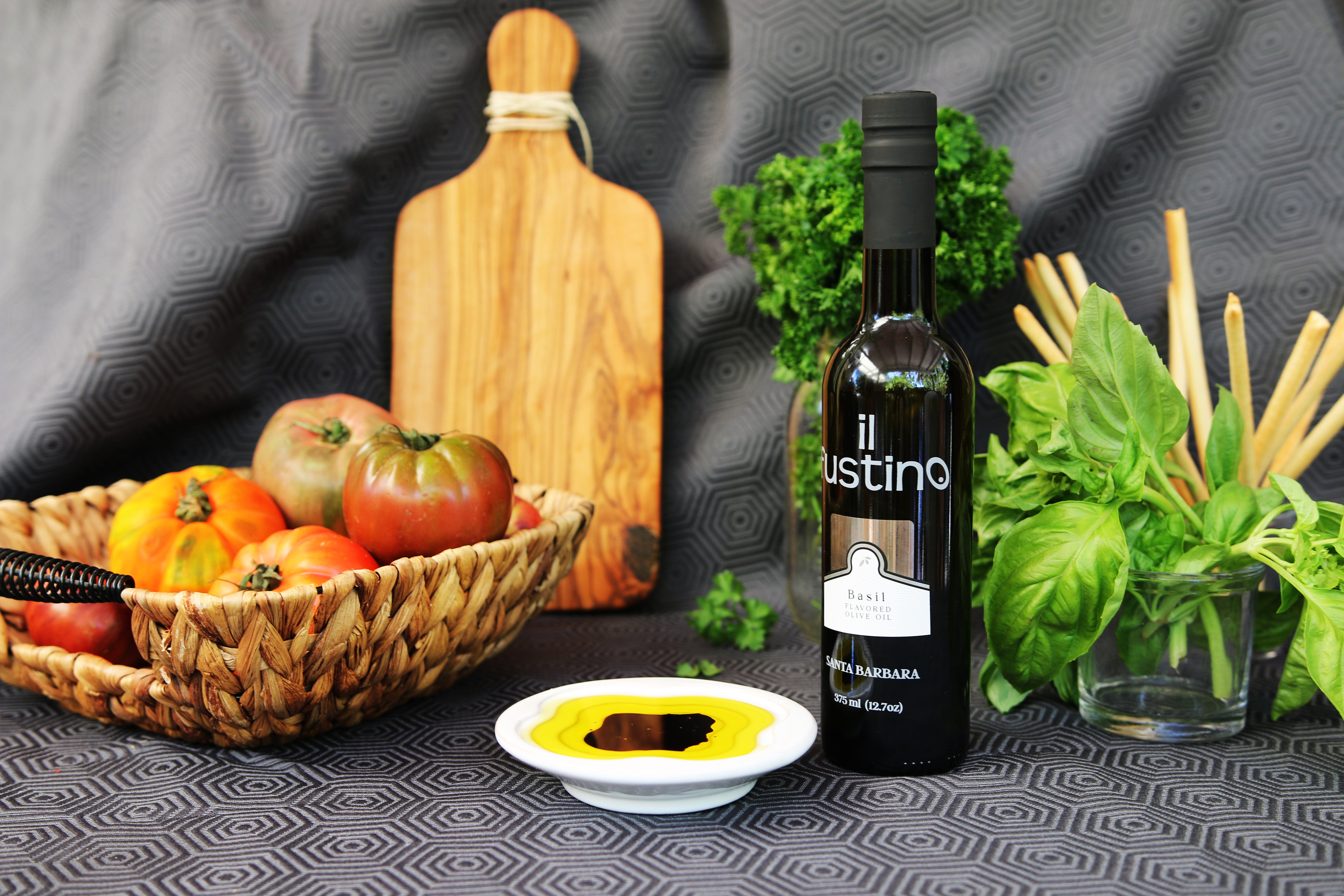Tasting Olive Oil
Color: Surprisingly the color of olive oil has little or nothing to do with its taste or quality. Most people assume that the "greener" the oil the better the taste and quality. In fact, color is not an indicator of either. Professional tasters actually use special blue glasses to mask the color of the oil so it will not bias their opinions.
Consistency: Olive oil should be smooth with a pronounced body, not thick and syrupy or watery and thin. Consistency is an indicator of the extraction process and smooth consistency insures the oil was produced by natural methods, not heated or chemically extracted.
Taste: of course is a complex, experiential sense, combining smell, taste, mouth-feel and psychology. Before tasting make sure your palette is clear. Drinking a bit of water helps. We strongly recommend NOT tasting with bread. Bread obscures the pure flavor of the oil. Instead we recommend directly drinking the oil following the rule of "The 4 S's:"
- Swirl
- Smell
- Slurp
- Swallow
Swirl
First, warm the oil in the palm of your hand. Optimal temperature for tasting oil is room temperature or about 70 degrees. Warming it will release the aroma. Swirling it will coat the cup or glass and molecules of oil will be released into the air. You may even want to cover the top of the container with your other hand to hold in the aroma as it warms until you are ready to....
Smell
You are looking for a fresh "green" "grassy" or "fruity" aroma of olives. There should be no hint of rancidity, like old nuts. If there is stop right here. Nor should there be a "fusty" or "musty" odor. Olives that are not immediately sent to the mill can start to ferment or mildew. Oils will vary from a strong to light odor, but should always smell fresh. Get ready to....
Slurp
This is the fun part and it is definitely acceptable and advised to slurp rather than sip! You don't have to drink a lot, but you want to take in enough to coat your entire mouth and tongue and activate all your taste buds. If you must sip, rather than slurp, inhale some air through your mouth to spread the oil around. You will notice some bitterness. This is a good thing. Bitterness indicates the presence of phenols, which indicate the oil is still young. As oil ages, phenols oxidize (combine with oxygen), which is why they are called antioxidants. As you taste different oils, and you should to compare differences, you will notice different levels of bitterness. Now you can finally....
Swallow
As you do, you should detect a kind of throat tickle or a bit of burning; you may even cough. This is the pungency of the olive oil reacting with the membranes of your throat. It can range from smooth to spicy or peppery; the degree of pungency will vary with the oil.
3 Taste Indicators you are looking for
Fruitiness: Any positive organic smell or taste. Oils may smell or taste of green apples, grass, pepper, orange, or even wild flowers.
Bitterness: A good sign in fresh olive oils, indicating the presence of antioxidants and freshness. Bitterness will dissipate over time.
Pungency: A piquant or biting tactile sensation indicating the presence of unripe olives; it may produce a mild burning sensation and cause you to cough.
Selecting an Oil
Now you have tasted 3 or 4 oils and you have some appreciation for the differences, what you want to do is consider what you will use them for. A pungent somewhat bitter oil will stand up well to strong flavors like onions, bleu cheese, and ripe tomatoes. A milder oil might be a better choice for a simple salad of mixed greens. But is is really up to you! Just like you probably did when you began drinking wine and went for the sweeter brands first, then evolved your tastes towards more acidic and assertive varieties, your taste in olive oil will evolve and develop as well.



